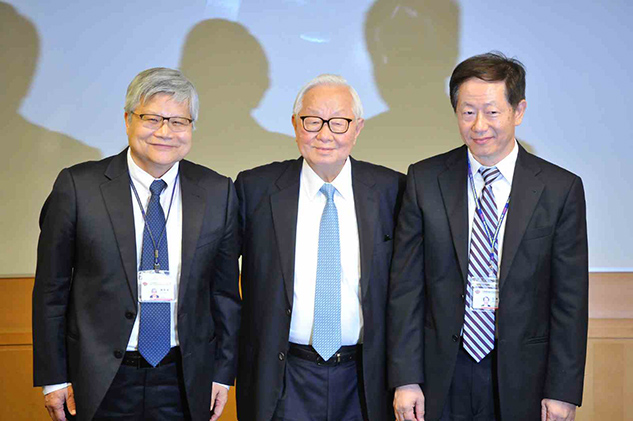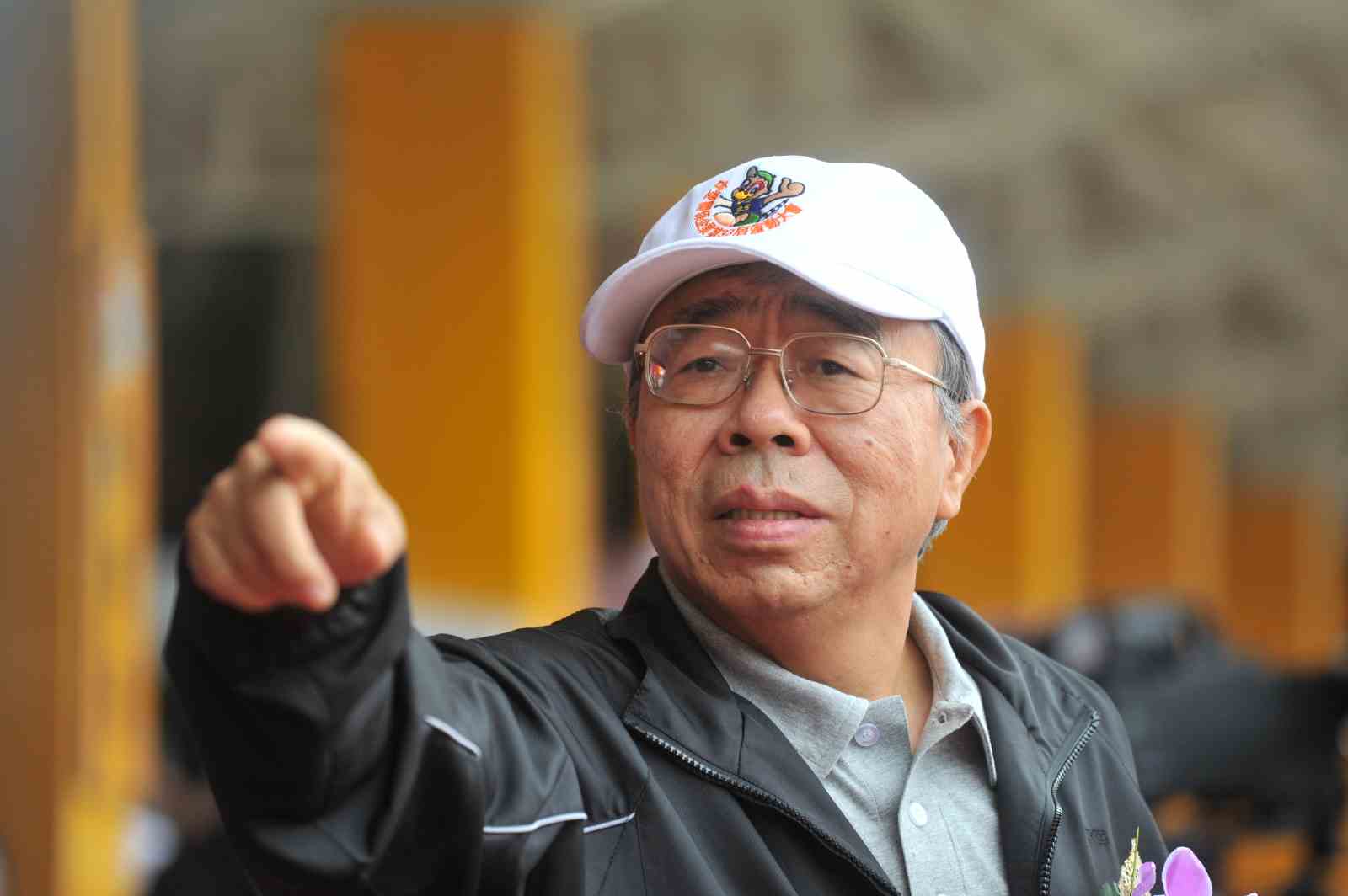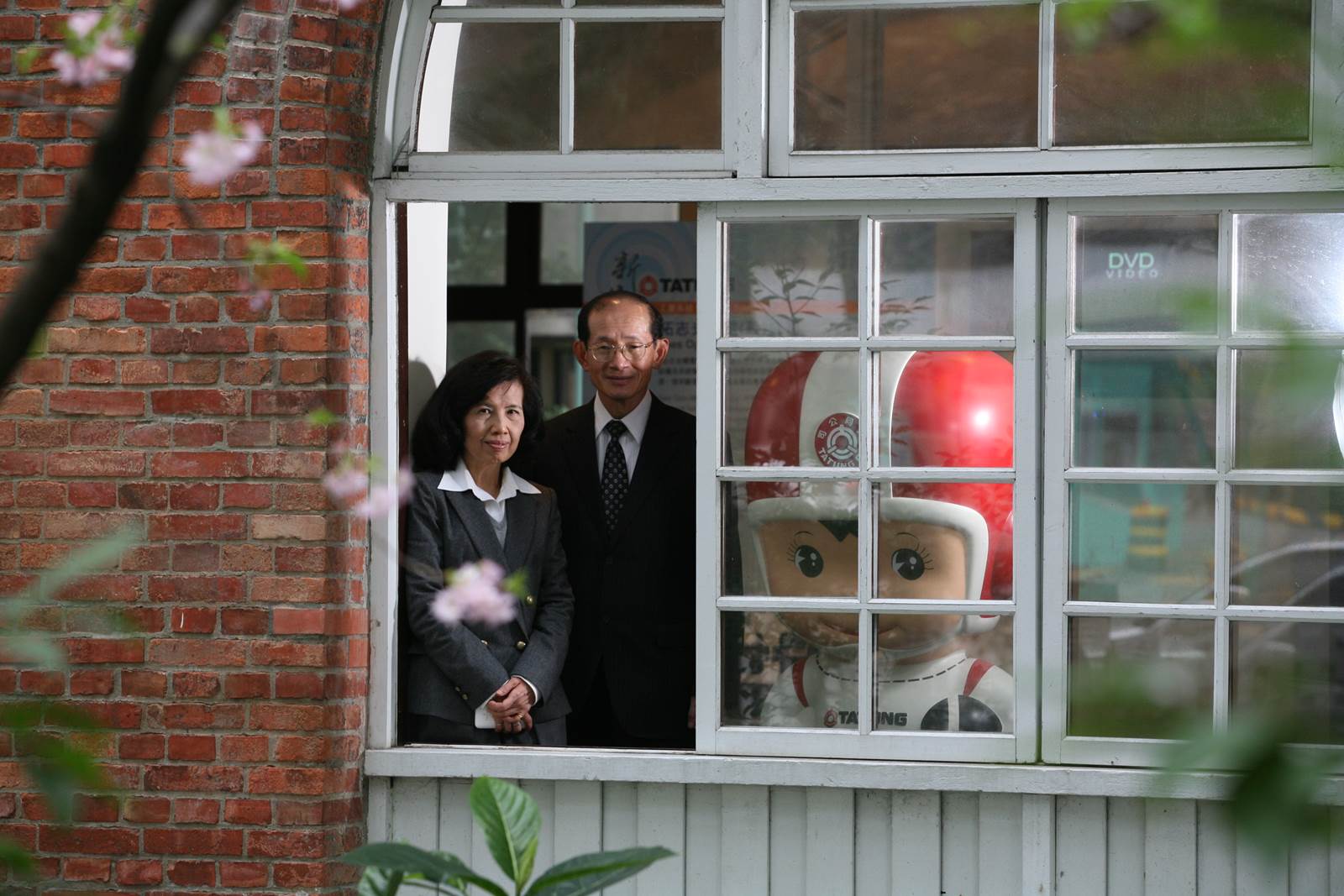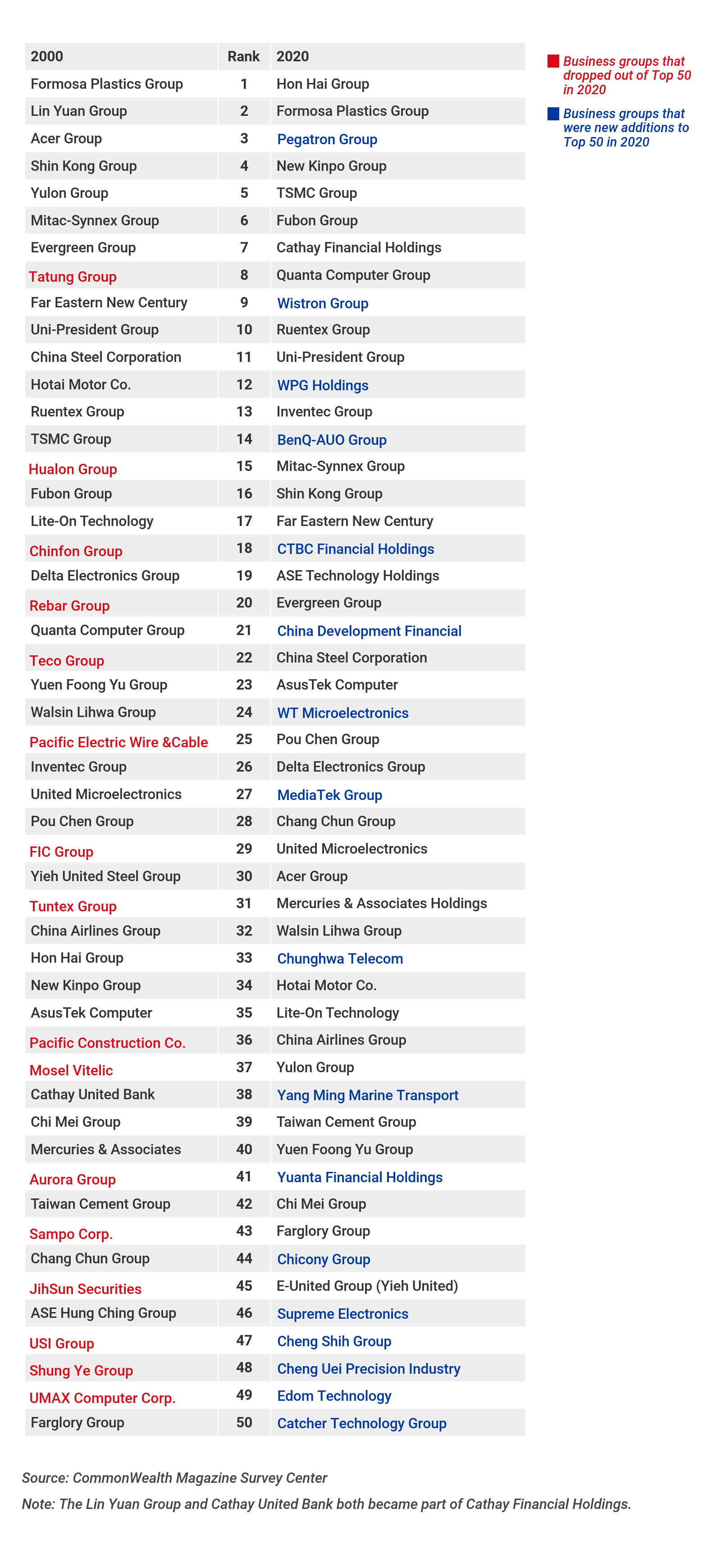Taiwan Top 2000
Taiwan Top 50 Business Groups: 20 Years Later, Who’s In and Who’s Out?

Source:Kuo-Tai Liu
CommonWealth Magazine has released its first survey of Taiwan’s biggest business groups since 2000. The changing face of the Top 50 rankings over the past two decades mirrors Taiwan’s rapidly evolving economic landscape, with some man-made disasters thrown in.
Views
Taiwan Top 50 Business Groups: 20 Years Later, Who’s In and Who’s Out?
By Kuo-chen Lu, Ching Fang WuFrom CommonWealth Magazine (vol. 698 )
CommonWealth Magazine released its first Taiwan Business Group Top 50 in 2000. This year’s new survey of the country’s 50 biggest conglomerates reveals how the past two decades have changed the face of Taiwan’s business titans.
Twenty years ago, Taiwan’s center of economic strength was already shifting from small- and medium-sized enterprises to big business groups, and the trend has only become more pronounced with time. Today, the combined revenue of the top 50 business groups exceeds Taiwan’s GDP.
Particularly evident in this 20-year comparison is the inevitability of change. Some of the business groups that were riding high in 2000 have expanded into the international arena, and are on equal footing with global leaders. Others have fallen out of the elite club, undone by succession issues that undermined their operations. What were the conditions and management issues that brought them down?
Between 2000 and 2020, the TSMC Group’s annual revenue rose from under NT$100 billion to NT$1.1 trillion, an annual compound growth rate of about 13 percent. Its market capitalization has soared to nearly NT$8 trillion, higher than that of long-time customer Intel and one of the 20 highest market caps in the world.
Food conglomerate Uni-President Enterprises is another group that has experienced a boom. Its revenue has soared above that of such heavyweights as the U.S.-based Kellogg Company, Japan’s Nissin Food Group, and China’s Mengniu Dairy Company, catapulting it into the top 20 in the global food & beverage industry.
Not to be left out are Taiwan-based companies Hon Hai Precision Industry, Pegatron Corporation and Wistron Corporation, which dominate the global electronics contracting sector, long one of Taiwan’s strongest suits.
Among the groups that fell out of the top 50 are the Rebar Group, Tuntex Group, Tatung Group, and Chinfon Group along with Hualon Corporation and Pacific Electric Wire & Cable (PEWC). What happened to these companies that were once at the top of the world and led by people who were very well-connected in both the business and political worlds?
CommonWealth has carefully analyzed the changes experienced by Taiwan’s biggest business groups over the past 20 years through the prisms of the biggest risers and fallers.
ICT/Electronics Industry:
Following the Big Boys, but Profits Down
Among the Top 50 Business Groups, half are in the information and communications technology (ICT) sector, the main pillar of the country’s economy.
“That’s because they are following giants,” observed PwC Taiwan Chairman and CEO Joseph Chou.
The ICT sector has seen a massive surge in the past two decades, driven especially by Apple’s supply chain. From contract chipmaker TSMC to electronics manufacturing services providers Hon Hai, Pegatron, Compal Electronics and Quanta Computer, they have all broken the NT$1 trillion sales barrier.
But while these electronics giants generate massive sales numbers, their after-tax profits are relatively low. Compal Electronics, with more than NT$1 trillion in revenue, and Wistron, with revenue of more than NT$900 billion, have net profit margins of less than 1 percent. IC foundry United Microelectronics (UMC) led the Top 50 in profits 20 years ago, earning more than rival TSMC, but its after-tax profit is now only about half of what it was in 2000.
Massive business growth but thinning profits – this has been the fate of Taiwan’s electronics contractors over the past two decades. Amid the turmoil of industrial upgrading and relocation, these manufacturing giants decided to sacrifice margins in exchange for size to reduce the number of competitors in the field and limit market uncertainty. But the strategy has had consequences for growth.
“Because growth rates are so low, they can no longer rely on industry trends to pursue organic growth,” PwC’s Chou said, explaining why the future of the ICT sector will depend on mergers and acquisitions.
 Photo by
Chien-Tong Wang
Photo by
Chien-Tong Wang
The industry has already been moving in that direction. IC testing and packager Advanced Semiconductor Engineering merged with rival Siliconware Precision Industries (finalized in 2018), Hon Hai acquired Sharp of Japan in 2016, and Taiwan-based WPG Holdings, a distributor of semiconductor components ranked 20th on the Top 50 list, has expanded the same way.
Two Taiwanese ICT companies that have built their own brands – Acer and AsusTek – remained in the Top 50, but their revenue is down from their peaks in 2010 and 2007, respectively.
Their ups and downs symbolize how Taiwan successfully capitalized on the trend toward personal computer and notebook branding but lagged behind when the market switched gears to smartphone software service brands.
Wen Chao-tung, a professor in National Chengchi University’s Graduate Institute of Technology, Innovation & Intellectual Property Management, has taken note of the gradual shift in the electronics landscape from hardware to software. But he said that if Taiwan can sustain its manufacturing management prowess, the market value of these companies will become apparent over time, enabling them to acquire brands and make their mark internationally.
 Photo by
Chien-Ying Chiu
Photo by
Chien-Ying Chiu
Petrochemicals
From Volume to Quality to R&D in the Future
The Formosa Plastics Group dominated Taiwan in 2000 but is now the only old-economy manufacturer left among the 10 top-ranked biggest groups in the Top 50. The secret weapon that has kept it at the top (second in the 2020 Top 50) is its sixth naphtha cracker complex in Mailiao in Yunlin County.
In August of 2000, the sixth naphtha cracker complex began producing gasoline and diesel fuel, realizing Formosa Plastic Group founder Wang Yung-ching’s dream of “moving upstream in the petrochemical industry, entering a business monopolized by a state-run enterprise, and using good management to win.”
The Formosa Plastics Group produces everything from oil products to plastic materials at the Mailiao complex, helping minimize costs and maximize benefits.
“The sixth naphtha cracker plant doesn’t make plastic bags but rather hydrofluoric acid used in the production of circuit boards, wafers, and transistors needed in iPhones and TSMC’s manufacturing processes. This is directly related to the boom in Taiwan’s ICT sector,” said Chan Wen-nan, the director of the Marketing Intelligence & Consulting Institute.
Formosa Plastics seized on the growing strength of the ICT sector to emerge as one of the three biggest petrochemical groups in the world.
Yet it is also true that Formosa Plastics has stopped taking great strides forward in the past 10 years. In small, densely populated Taiwan, the massive scale of the sixth naphtha cracker complex has created a huge burden for local residents. In 2011, the complex experienced several occupational safety incidents, pushing resistance to its presence to a new high, and environmental impact assessments have slowed down expansion projects, resulting in a plateauing of revenues.
Formosa Plastics Group President Wang Wen-yuan has been busy planning a US$10 billion project in Louisiana, while new investment in Taiwan has shrunk to nothing. Faced with these many challenges, the group could not hold off Hon Hai from vaulting past it into the top spot in the Top 50.
 Photo by
Kuo-Tai Liu
Photo by
Kuo-Tai Liu
That does not mean Taiwan’s petrochemical industry is incapable of growth, as demonstrated by the Chang Chun Group. Twenty years ago, Chang Chun ranked 44th among Taiwan’s Top 50 Business Groups; this year, it vaulted to 28th, a rise fueled by strong R&D capabilities.
In 2018, one of Taiwan’s most prestigious technology awards – the Pan Wen Yuan Prize – was awarded to Chang Chun Group President Lin Shu-hong, making him the first petrochemical sector leader to receive a major award in the semiconductor and technology sectors.
Compared with Wang Yung-ching, who stressed economics of scale, Lin has prioritized the development of leading and unique technologies. His conglomerate supplies key materials for everything from Apple’s mobile phones to the batteries for Tesla’s electric vehicles, enabling copper foil from Miaoli County to find its way into the U.S. market.
Chang Chun has never shown explosive growth, relying instead on R&D and technology to survive and thrive, and it is the only group among the Top 50 to have never listed its shares publicly. Its emphasis on R&D and its low-volume, high-price sales approach could very well become the model for Taiwan’s petrochemical industry in the future.
 Photo by Ming-Tang Huang
Photo by Ming-Tang Huang
Financial Services/Old Economy Industries
One Relying on Insurance to Thrive, One Struggling with Losses
Among the Top 50 groups, those in the financial services sector are quite profitable. CTBC Financial Holding and the Ruentex Group have net margins of 10 percent and nearly 8 percent, respectively, and the net margins of two conglomerates with more than NT$1 trillion in revenue, the Fubon Group and Cathay Financial Holdings, are around 6 percent.
Eleven conglomerates in the Top 50 are either financial holding companies or groups that depend on the massive income of their life insurance subsidiaries to crack the elite club, such as the Ruentex Group and subsidiary Nan Shan Life, Mercuries & Associates Holdings and subsidiary Mercuries Life Insurance, and the Farglory Group and subsidiary Farglory Life Insurance.
Hank Huang, the head of the Taiwan Academy of Banking and Finance, observed that the growth of the insurance industry and popularity of insurance coverage has absorbed deposits from banks, leading to a decline in the relative importance of banking services.
“This shows that Taiwan is risk averse and does not encourage taking on or pursuing risk,” Huang said.
On the other hand, the shipping, aviation and automotive sectors have fallen on hard times. The Evergreen Group, Ho Tai Motor Co., Yulon Motor Co. and China Airlines all retained their spot in the Top 50, but Ho Tai and the Evergreen Group are the only two from this category of companies that were profitable in 2019. Even then, the Evergreen Group’s ranking slid, as did its profits.
Of the groups that are losing money, Yulon Motors finds itself stuck in the morass of an investment strategy focused on building its own luxury car brand. The group’s new CEO, Lilian Chen, the wife of late Yulon chairman Kenneth Yen who passed away in December 2018, has moved aggressively to restructure the Luxgen brand, resulting in the Yulon Group’s first ever losses. She also changed course and decided to partner with Hon Hai; whether that can revive the venerable company will be its biggest test in the future.
As for conglomerates that once flourished before fading away, what are the lessons they offer?
Companies that Fell Out of the Top 50
People the Biggest Causes of Collapse
Rebar, Tuntex, Hualon and PEWC all lost their places in the rankings. The first three got their starts in textiles and then expanded into cement, petrochemicals and even financial services. PEWC was Taiwan’s first and largest electric cable company before diversifying by founding Taiwan Fixed Network and Taiwan Mobile and serving as one of the five founding shareholders of the Taiwan High-Speed Rail Corporation.
The heads of these conglomerates had both money and influence, being involved in politics while running their companies.
Rebar Group Chairman Wang You-theng served as a member of the Kuomintang’s Central Standing Committee and as a national policy advisor to former President Chen Shui-bian. Tuntex Group Chairman Chen Yu-hao was also once a member of the KMT’s Central Standing Committee and built southern Taiwan’s first skyscraper, the 85-story Tuntex Sky Tower in Kaohsiung, which was completed in 1997. Hualon Chairman Oung Ta-ming set a record by being elected to Taiwan’s Legislature after campaigning for only about two weeks.
Not long after, however, their ties connecting politics and business crumbled, and they soon faced major legal entanglements, tarnishing the companies’ legacies.
Those businesses failed not because of an inability to capitalize on trends, as they all gained access to opportunities created by the deregulation of the banking and telecommunications sectors. What spelled their demise was their complete disregard for corporate governance.
Lee Ji-ren, an adjunct professor in National Taiwan University’s College of Management, attributes the collapse of those big groups to three main factors: not focusing on their core businesses, siphoning off company funds for personal use, and failing to plan for the future.
Similar business groups with interests in cement, textiles and electric cables, such as Far Eastern New Century, Taiwan Cement, and the Walsin Lihwa Group, all remained in the Top 50, indicating that manmade disasters can be more serious than natural disasters. Business groups that fail to concentrate on their core competencies and ignore corporate governance will have trouble standing the test of time.
As it turns out, Oung was declared bankrupt in 1994, and Hualon handled its closure poorly, stiffing workers at one of the plants it closed of NT$700 million in back salary and pensions. Oung died in 2015. Wang fled Taiwan in late 2006 as the Rebar Group was coming apart, and he ended up in the United States. He was later wanted in Taiwan for allegedly embezzling NT$60 billion, but never returned to Taiwan to face trial and died in the U.S. in 2016. Chen Yu-hao fled to the U.S. in the early 2000s after dissolving Tuntex and later moved to China. He is said to owe NT$415 million in taxes to Taiwan’s government and NT$70 billion in loans to Taiwanese banks.
Succession Challenge
Of Top 50 Groups, Nearly Half Still Led by Founders
Other groups that fell out of the Top 50 faced another problem: leadership succession chaos after the founder laid a strong foundation for the business.
Tatung is an example.
In 2000, the Tatung Group had revenue of NT$171.98 billion, ranking eighth in the Top 50. The conglomerate was manufacturing goods in both Taiwan and China, and moved into high-tech LCD displays to capitalize on the ICT revolution. At its peak it accounted for 1 percent of Taiwan’s GNP.
 Source: CW
Source: CW
Those days of glory are long gone, however. Tatung fell out of the Top 50, and Lin Wei-shan, the oldest son of Tatung founder Lin Ting-sheng, who succeeded his father as chairman, was sentenced to eight years in jail in 2019 for embezzlement and breach of faith.
Tatung was hurt by internal family strife, with Lin Ting-sheng’s three sons from two wives departing from the company one after the other and leaving Tatung’s human resource and corporate governance systems in chaos. Massive losses followed, a sad fate for the century-old enterprise.
Chinfon Global Corp. (Chinfon Group), which ranked 18th in 2000 with revenue of NT$86.75 billion, was another of the groups that slid out of the Top 50. It was founded by Huang Shih-hui, the oldest son of Sanyang Motor co-founder Huang Ji-jun. After Huang Shih-hui took over Sanyang, he diversified the company’s interests from motorbikes into cement, banking and insurance, dramatically expanding the group’s profile and changing its name to Chinfon Global Corp.
But the good times did not last. The group’s expansion collided with the 1997 Asian Financial Crisis, and its non-core businesses ran into serious problems. Though its main Sanyang Motor business remained stable, it eventually shrunk in size.
Once Honda pulled out of Sanyang Motor in early 2002 to manufacture its own vehicles in Taiwan and sell Honda automobiles, Sanyang decided to partner with Hyundai Motor Co. of South Korea. But it sold far fewer Hyundai vehicles than when it represented Honda, causing revenue to tumble.
The Chinfon Group’s struggles also resulted from succession issues. Sanyang Motor was not originally founded by Huang Ji-jun alone. Holmsgreen Group founder Chang Kuo-an and Honda of Japan were also partners, and the three pillars gave the company a stable base. But after Huang Shih-hui returned from the United States to take Sanyang’s reins, he first eliminated the positions occupied by Chang Kuo-an and his son Walter Chang, and then parted ways with Honda. This imbalance between the three founders resulted in Chang Kuo-an’s family and Honda selling their shares.
Control of Sanyang’s management rights entered a turbulent period, and they were ultimately handed over to a non-founding shareholder, the company’s current chairman Wu Ching-yuan.
Of the companies in the Business Group Top 50, nearly half are still run by their first-generation founders, and figuring out how to arrange a succession that balances the power of different factions and creates common goals will likely test these conglomerates in the future.
There are also examples, however, of unusual succession plans that succeeded.
In 2000, Acer had consolidated sales of NT$268.65 billion, third highest in the Top 50, but Acer founder Stan Shih decided to reinvent his company after it lost money by spinning off its contract manufacturing services into the brands Wistron and what eventually became BenQ from the Acer computer brand business. Shih’s goal at the time was to have the three brothers survive on their own.
Over the past 20 years, the ICT sector has experienced change at a feverish pace. Computer contracting services have evolved from desktop and notebook computer assembly to servers, followed by the emergence of smartphones, and Shih’s move may have helped the Acer family of companies better adapt to market shifts.
 Source: CW
Source: CW
In the 2020 Top 50, the Acer companies occupied the ninth (Wistron), 14th (BenQ-AUO Group) and 30th (Acer) spots in the Top 50. Their combined sales would yield a company that would have placed second in the rankings, ahead of the Formosa Plastics Group.
So is splitting up necessarily a bad strategy? Lee Ji-ren observed that, based on the Acer companies’ results, Shih’s strategy to give each entity its own stage on which to flourish has paid off, and the breakup stands out as a potential model for Taiwanese business groups grappling with succession issues and internal conflicts among disparate businesses.
There was one other type of conglomerate that fell off the chart: profitable companies whose revenue growth simply could not match that of the ICT sector. Among them were the Teco Group (maker of electrical equipment), Sampo Corp. (maker of household electrical items), the Aurora Group (office automation) and the USI Group (chemicals).
These conglomerates run stable businesses and make money and issue dividends almost every year, but their revenue growth has been unable to keep up with the soaring growth seen in the electronics world.
Companies that do not grow tend to be phased out over time. Taiwan’s major business groups should reflect on their ups and downs over the past two decades and draw on that historical perspective to find the best way forward over the next 20 years.

Have you read?
♦ Taiwan’s Top 50 Performers: IC Design Leads the Pack Thanks to China’s 5G Potential
♦ TSMC Fab in US Part of Second Wave of the Trade War: Industry Insiders
♦ COVID-19: How Taiwanese companies are rethinking 2020
Translated by Luke Sabatier
Edited by TC Lin
Uploaded by Judy Lu






